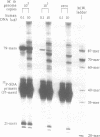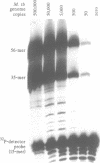Abstract
Strand Displacement Amplification (SDA) is an isothermal, in vitro nucleic acid amplification technique based upon the ability of HincII to nick the unmodified strand of a hemiphosphorothioate form of its recognition site, and the ability of exonuclease deficient klenow (exo- klenow) to extend the 3'-end at the nick and displace the downstream DNA strand. Exponential amplification results from coupling sense and antisense reactions in which strands displaced from a sense reaction serve as target for an antisense reaction and vice versa. In the original design (G. T. Walker, M. C. Little, J. G. Nadeau and D. D. Shank (1992) Proc. Natl. Acad. Sci 89, 392-396), the target DNA sample is first cleaved with a restriction enzyme(s) in order to generate a double-stranded target fragment with defined 5'- and 3'-ends that can then undergo SDA. Although effective, target generation by restriction enzyme cleavage presents a number of practical limitations. We report a new target generation scheme that eliminates the requirement for restriction enzyme cleavage of the target sample prior to amplification. The method exploits the strand displacement activity of exo- klenow to generate target DNA copies with defined 5'- and 3'-ends. The new target generation process occurs at a single temperature (after initial heat denaturation of the double-stranded DNA). The target copies generated by this process are then amplified directly by SDA. The new protocol improves overall amplification efficiency. Amplification efficiency is also enhanced by improved reaction conditions that reduce nonspecific binding of SDA primers. Greater than 10(7)-fold amplification of a genomic sequence from Mycobacterium tuberculosis is achieved in 2 hours at 37 degrees C even in the presence of as much as 10 micrograms of human DNA per 50 microL reaction. The new target generation scheme can also be applied to techniques separate from SDA as a means of conveniently producing double-stranded fragments with 5'- and 3'-sequences modified as desired.
Full text
PDF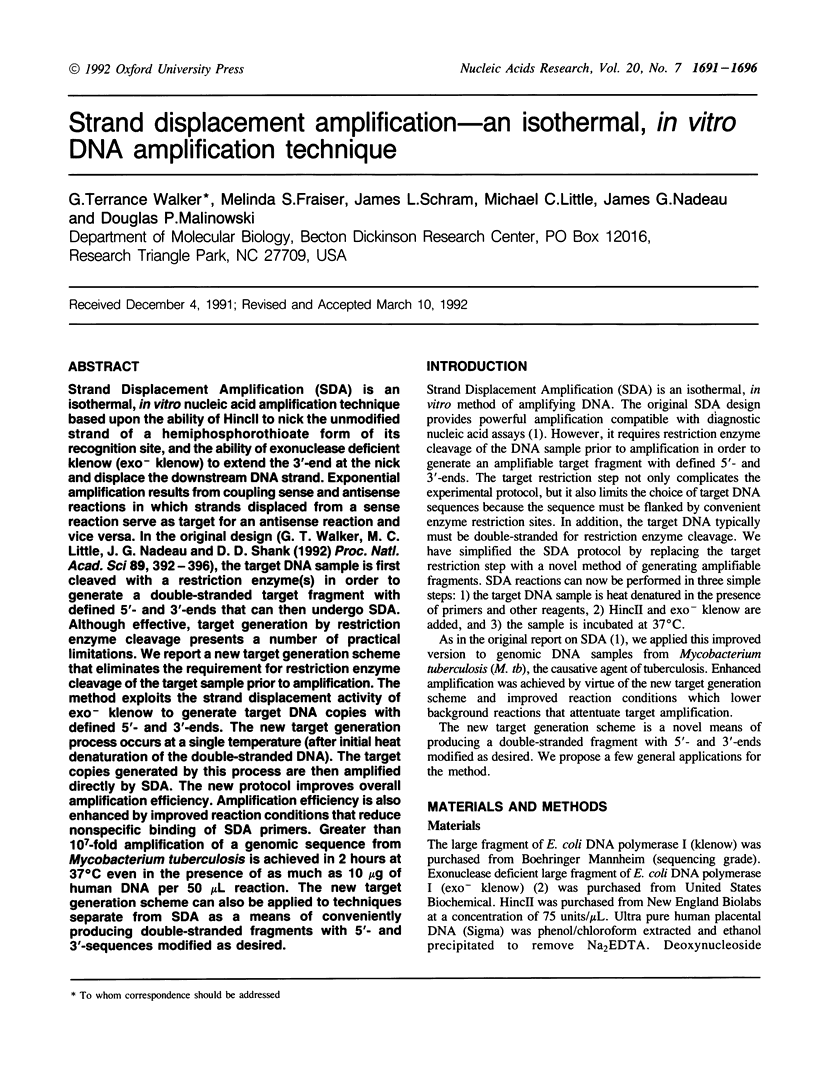
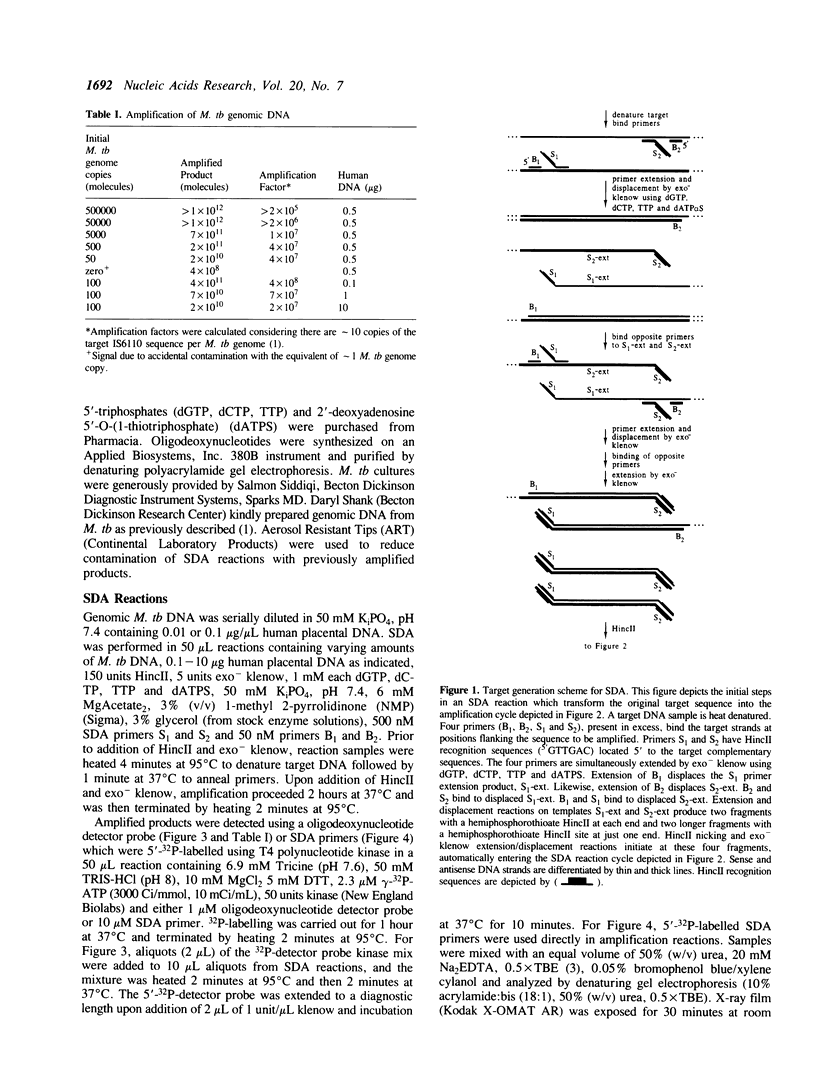
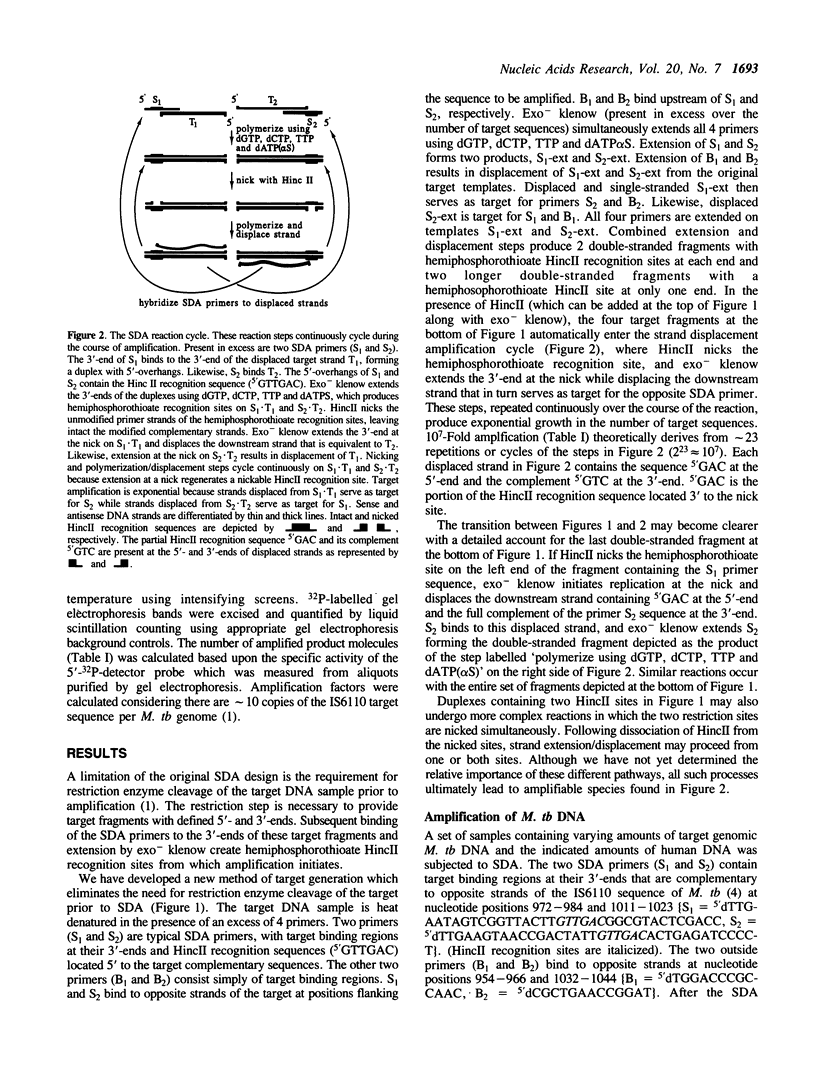
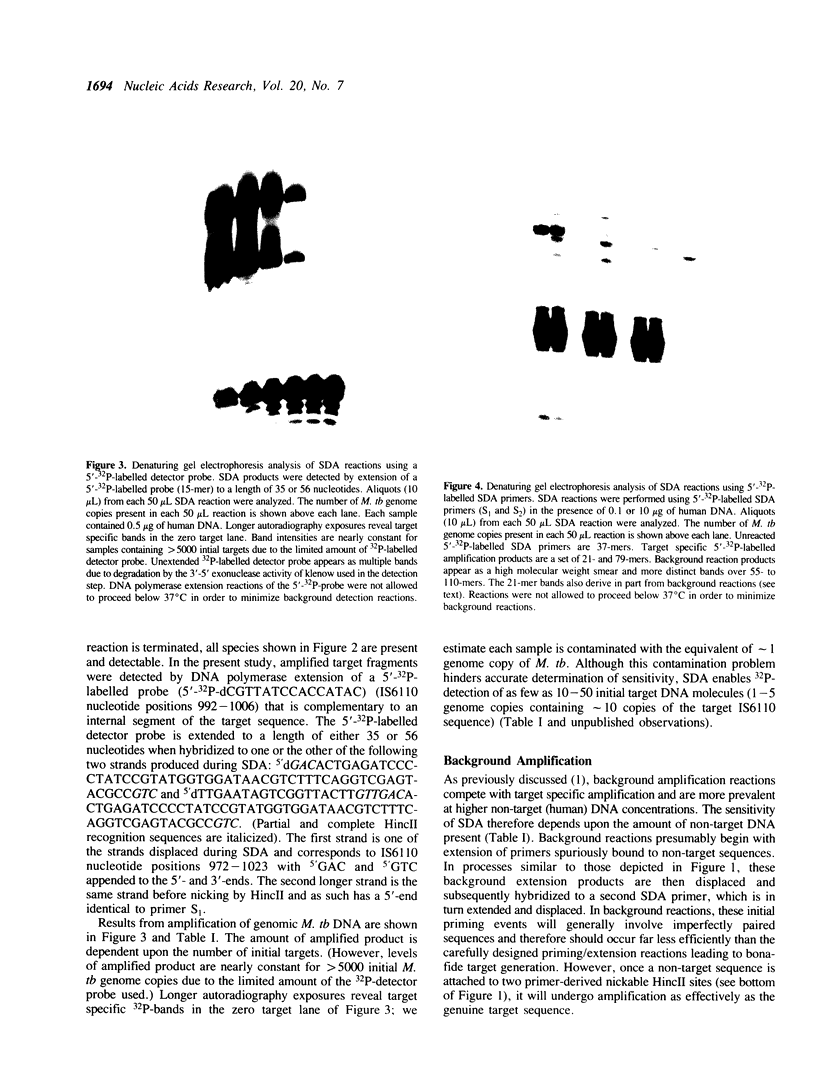
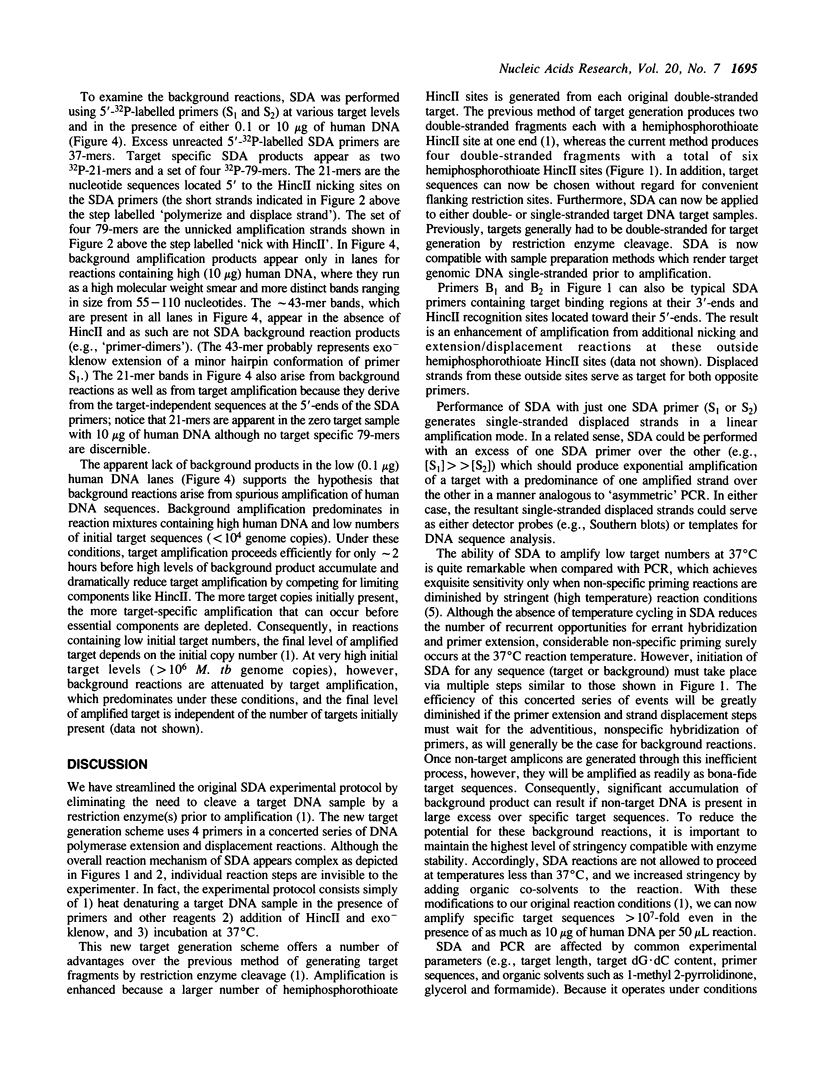
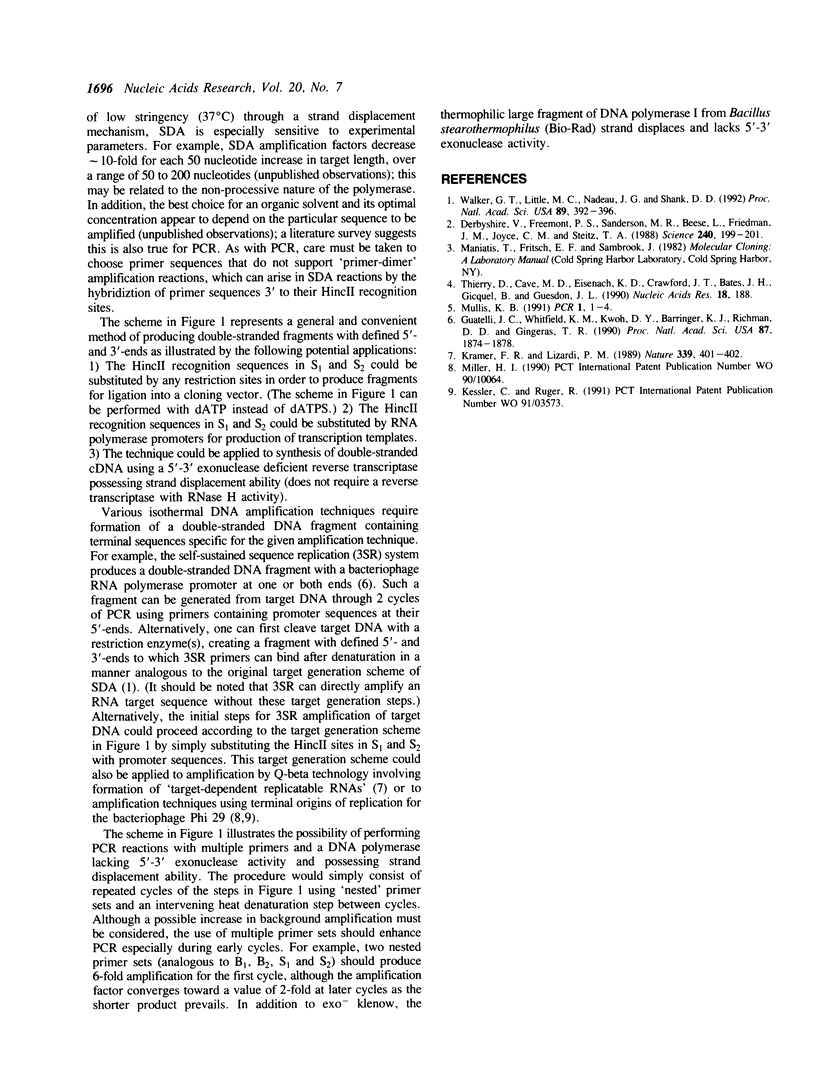
Images in this article
Selected References
These references are in PubMed. This may not be the complete list of references from this article.
- Derbyshire V., Freemont P. S., Sanderson M. R., Beese L., Friedman J. M., Joyce C. M., Steitz T. A. Genetic and crystallographic studies of the 3',5'-exonucleolytic site of DNA polymerase I. Science. 1988 Apr 8;240(4849):199–201. doi: 10.1126/science.2832946. [DOI] [PubMed] [Google Scholar]
- Guatelli J. C., Whitfield K. M., Kwoh D. Y., Barringer K. J., Richman D. D., Gingeras T. R. Isothermal, in vitro amplification of nucleic acids by a multienzyme reaction modeled after retroviral replication. Proc Natl Acad Sci U S A. 1990 Mar;87(5):1874–1878. doi: 10.1073/pnas.87.5.1874. [DOI] [PMC free article] [PubMed] [Google Scholar]
- Kramer F. R., Lizardi P. M. Replicatable RNA reporters. Nature. 1989 Jun 1;339(6223):401–402. doi: 10.1038/339401a0. [DOI] [PubMed] [Google Scholar]
- Mullis K. B. The polymerase chain reaction in an anemic mode: how to avoid cold oligodeoxyribonuclear fusion. PCR Methods Appl. 1991 Aug;1(1):1–4. doi: 10.1101/gr.1.1.1. [DOI] [PubMed] [Google Scholar]
- Thierry D., Cave M. D., Eisenach K. D., Crawford J. T., Bates J. H., Gicquel B., Guesdon J. L. IS6110, an IS-like element of Mycobacterium tuberculosis complex. Nucleic Acids Res. 1990 Jan 11;18(1):188–188. doi: 10.1093/nar/18.1.188. [DOI] [PMC free article] [PubMed] [Google Scholar]
- Walker G. T., Little M. C., Nadeau J. G., Shank D. D. Isothermal in vitro amplification of DNA by a restriction enzyme/DNA polymerase system. Proc Natl Acad Sci U S A. 1992 Jan 1;89(1):392–396. doi: 10.1073/pnas.89.1.392. [DOI] [PMC free article] [PubMed] [Google Scholar]



